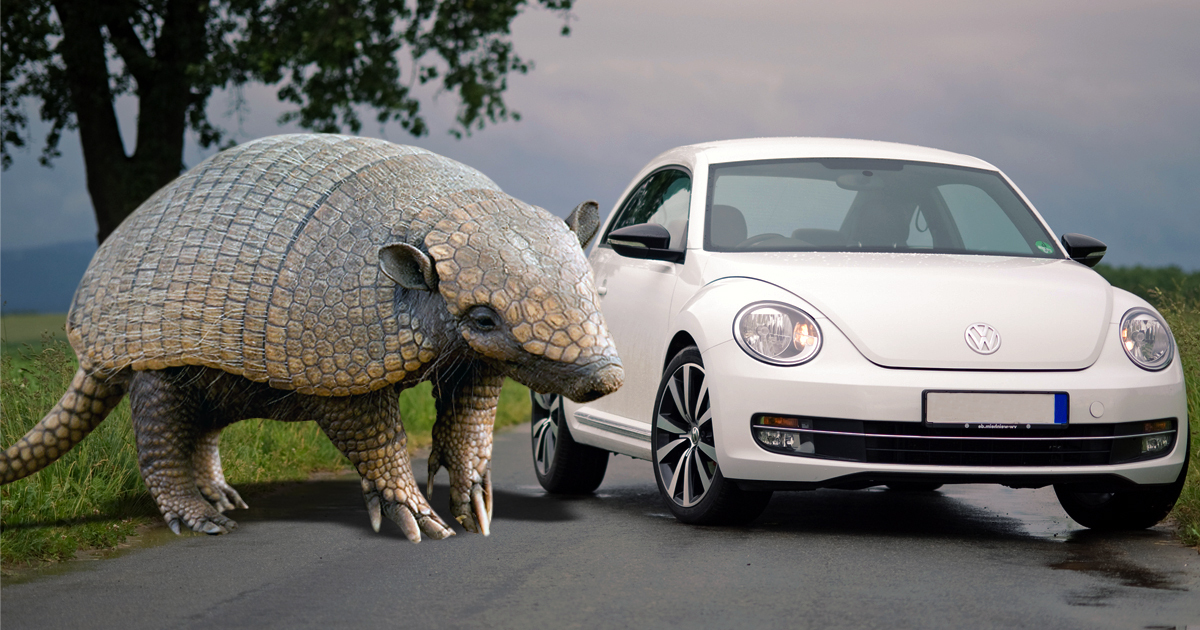Thousands of years ago, many creatures, such as prehistoric, giant armadillos, roamed our planet that no longer exist. Occasionally we are lucky enough to find bones and fossils, and we can learn about extinct creatures and how they died or how they morphed into modern animals by using DNA. One such animal was the glyptodon, a massive ancestor of the armadillo.
Recently, Juan de Dios Sota, a farmer living near Buenos Aires in Argentina, was putting his cattle out to pasture when he noticed two strange lumps in a dried up riverbed. When paleontologists were notified, they came on the site and found two large fossil shells of glyptodons, and, as they were excavating, they found two smaller shells which could have made up a family unit. The placement of the fossils indicated they were going in the same direction but for one which seems to be looking back toward the others. The largest of the shells was about five feet long and at least two inches thick.
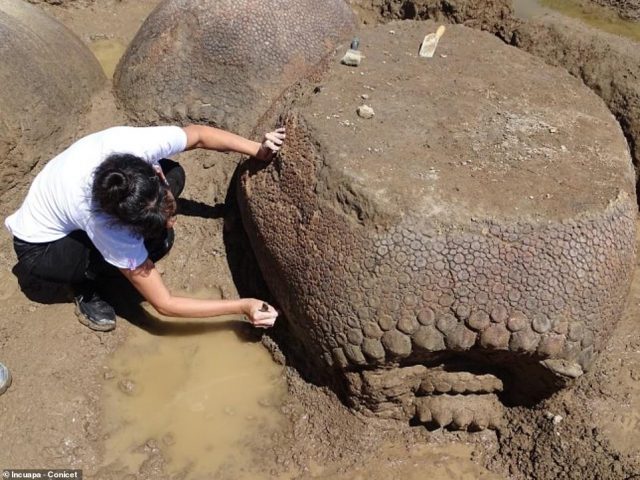
The shells resemble small rounded huts, and, according to Arizona Geological Survey, some have been found that are almost as large as a Volkswagen Bug. Charles Darwin was the first to discover glyptodon shells while traveling on the H.M.S. Beagle in the 1830s and studied them for quite some time. In 2016, Frédéric Delsuc of the University of Montpellier in France led a team that extracted and tested the DNA of a glyptodon fossil from South America and found they are more closely related to armadillos than was previously thought. His article can be found at ResearchGate.
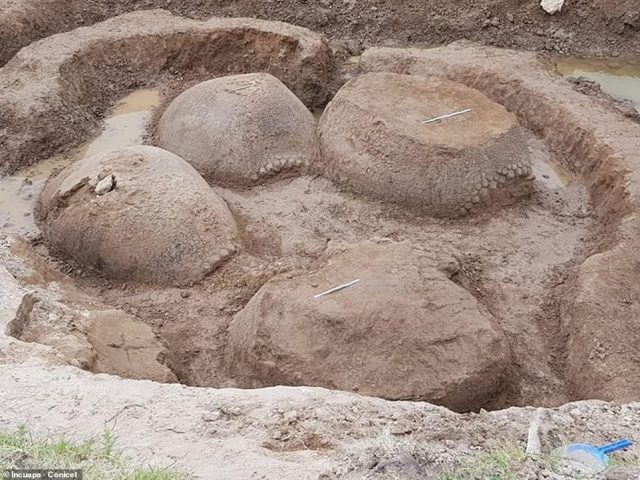
It had been previously assumed that glyptodons were distant ancestors of modern day armadillos. The new DNA and research, however, indicates that glyptodons are actually closely related not only to modern giant armadillos, but to the tiny fairy armadillos and to three-banded armadillos, according to Forbes, having diverged about thirty-five million years ago. EurakAlert quotes Delsuc that, “Taxonomically, they should be regarded as no more than another subfamily of armadillos, which we can call Glyptodontinae.”
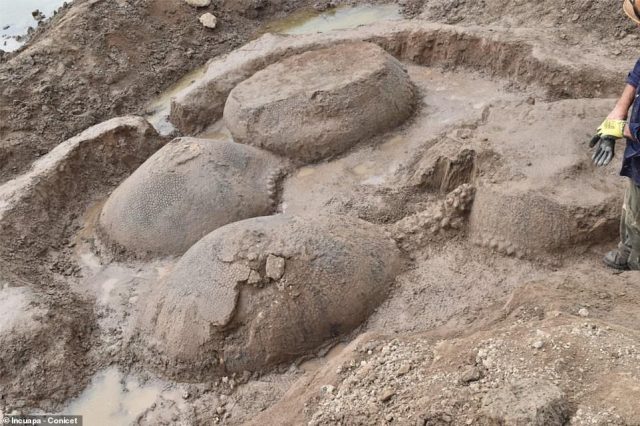
Glyptodonts (of which the glyptodon was the biggest type) were something like tortoises. They ate plants, and their shells were made of plates; however, the animal also had fur. Encyclopaedia Britannica reports that glyptodonts would also eat carrion or insects, perhaps a nod to their armadillo descendents. They could weigh two thousand pounds. The animal could not retreat into the shell as a turtle does, and its armor extended down the tail and over its head, but it’s belly side was not covered with shell. This protection must have worked, as they were plentiful in South America.
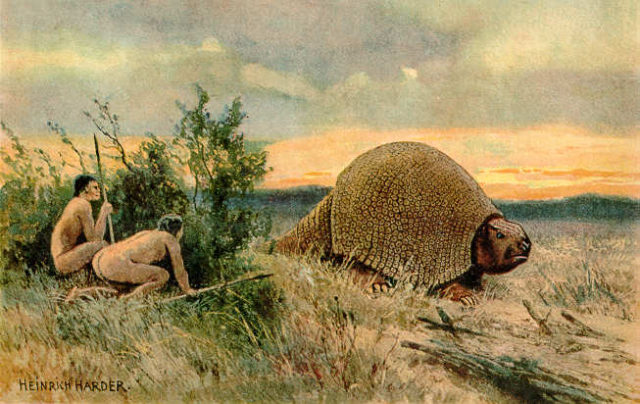
The strong carapace, its size, and its powerful, often spiked, tail could also have made the glyptodon a formidable foe. According to Nature, fractured glyptodon carapaces indicate it’s possible the creature fought over mates or territory. A glyptodon’s tail could weigh considerably over 200 pounds and pack a wallop of twenty-six miles per hour.
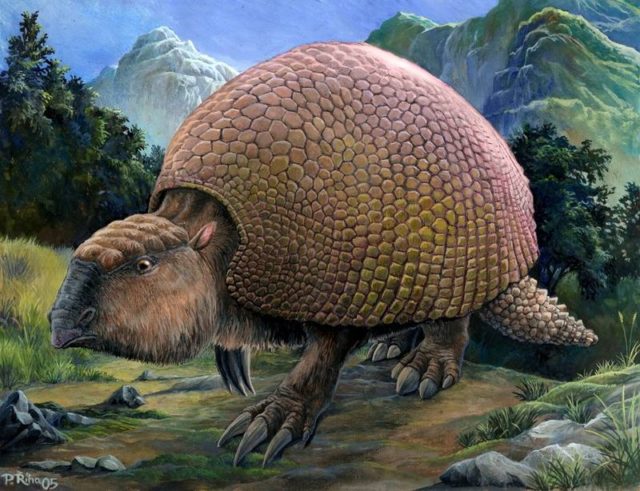
They would have had few, if any, natural enemies. Probably the only violence in the animal’s life would have come from same species competitors. It has been proposed that the giant sloth may have been able to take on a glyptodon and win, however there is no evidence one way or the other if that happened.
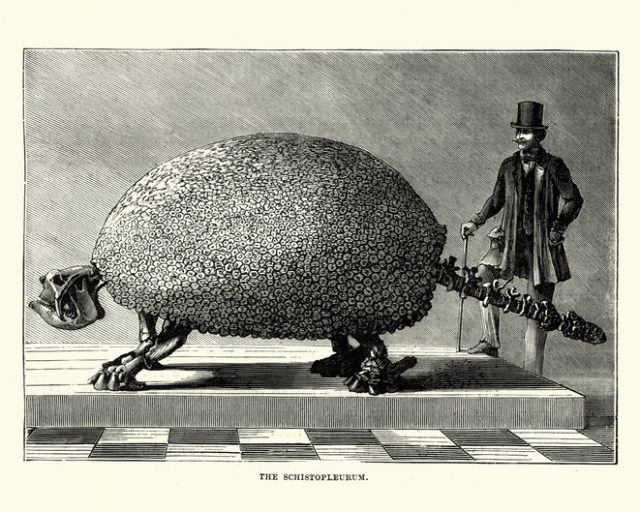
As did most surviving animals from prehistoric times, glyptodonts diverged into many separate species; two primary lines were Doedicurus which stayed mostly in South America and Glyptotherium that migrated north with their descendants eventually reaching southwest North America and Florida. Doedicurus evolved a tail with a massive mace at the end formed from protruding bones.
Related Article: When Giants Roamed the Earth – 8 Prehistoric Mega Mammals
Glyptodon lived through the time when continents were still moving into place and spent about sixty-three million years on what would become South America while it was still surrounded by the ocean. In the late Cenozoic Period, when the Caribbean Plate moved into place and connected the two continents, plants and animals were free to move across the Isthmus of Panama and the glyptodon, being so adaptive, went along too. They are herbivores that live near freshwater and during their lifetimes Mexico and the Southwest were green and lush.
